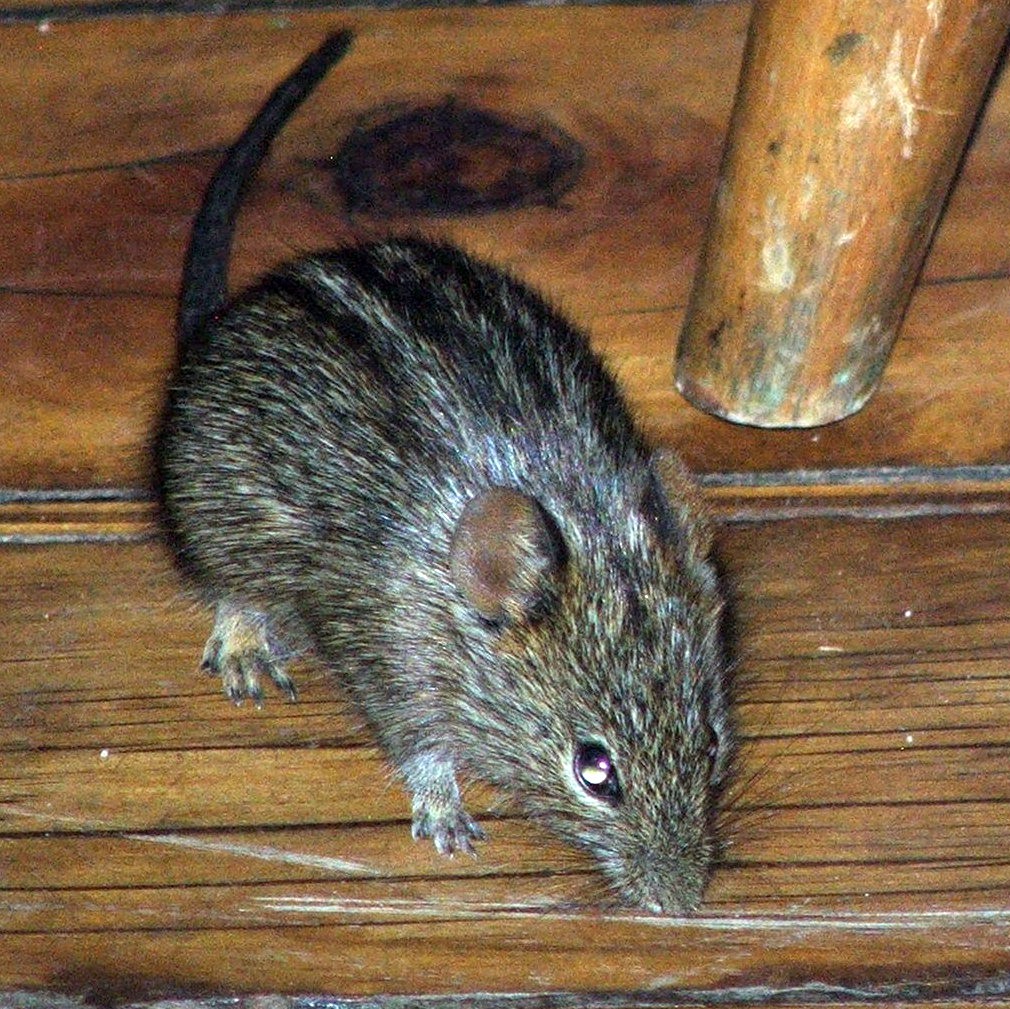Four-striped grass mouse
Memories of a mouse
Local conservationist and author Bart Logie shares some memories and interesting information about the Four-striped grass mouse.

It was so cold one winter that we had a fire in the dining-room almost every evening. I was allowed to eat my supper by the fire while the grown-ups sat around the table. One night from the corner of my eye I noticed a movement at the side of the fireplace. A moment or two later and the movement was repeated, but this time I saw that it was a little grey mouse that had scampered out to pick up a crumb that had dropped from my table. The grown-ups were all busy chatting away, so I didn’t draw any attention to the mouse, and later forgot all about it. Then the following evening the mouse was there again, and also the evening after that. By this time all the family had seen the mouse and my older sisters were as entranced by the small creature as I. It became a regular visitor and lost all fear of us, and I boasted to the boy across the road of how we had a tame mouse. And then it was gone, never to be seen again.
Years later, now a grown man, I happened in passing to mention the mouse to my father. “Yes, I remember it well,” he said. “You all were becoming far too fond of it, and where there is one mouse there are always a dozen or more. We would in no time have been overrun with mice, so I got rid of it.” So that was that and I too have in my time had to deal with house mice in a similar fashion.
Finding a Four-striped grass mouse climbing a tree
Recently, however, I was reminded of that earlier incident. Looking out the bedroom window one morning I saw a Four-striped grass mouse (Rhabdomys pumilio) climbing a tree. It disappeared behind a branch and I did not see it again until that evening when I glimpsed it scrambling down the tree trunk. The following morning I noticed it again and shortly afterwards my wife Caryl heard the cutlery in the kitchen rattling for no apparent reason. We put two and two together and started a search of the kitchen, and came across a small gap in the wall behind the refrigerator. Immediately outside was a branch of the tree the mouse climbed.
Setting myself up at the bedroom window I kept a lookout for the mouse, and sure enough, not long afterwards I saw it not only climb the tree, but dive through the hole into the kitchen. Later in the day, when I was having a snooze before supper, Caryl captured the mouse on camera having a good look at me.
Behaviour and habitat of Four-striped grass mice
It interested me that the mouse’s behaviour was absolutely typical of the species. Unlike the house mouse, the Four-striped mouse is active during the day, particularly in the mornings and late afternoons, resting during the middle of the day. Although living together in groups, they are also solitary foragers, so the appearance of one of these mice in the house does not automatically mean that the house is going to be invaded by an army of mice. While they do favour human habitations, because of the availability of food, they do not necessarily take up residence within a house.
Four-stripped grass mice are amongst the most widespread of South African rats and mice, for they are omnivorous and have the ability to survive without water so long as their food contains at least 15% of that liquid. As a result they are found from the humid south-east coast of the country, through the grasslands and the Karoo to the dry north-west.
Four-stripped grass mice and their predators at Kariega
We have also seen them at Kariega Game Reserve. They constitute an important prey item for a multitude of small to medium sized creatures including lynx (caracal), servals, jackals and mongoose, as well as birds of prey such as chanting goshawks and owls. They are also popular with snakes, and as a result are not encouraged by many that live in the country, lest the mice attract snakes.
Being the popular prey item that they are, they have to produce large families. They breed from the spring, through the summer to the autumn, five pups being born after a gestation period of 22 days. The pups consume solid food within 10 days of birth, and leave the nest after 12 days. Within five to six weeks they are sexually mature and as females usually have litters every 23 to 30 days, there can be an awful lot of mice around after a very short time. That this seldom happens is an indication of how efficient their predators are.
The prospects for the mouse
Up to now there has been no indication of a Striped Mouse takeover bid in the house. We’re careful not to leave foodstuff lying around and do not in anyway encourage his visits, but I haven’t the heart to put down a trap. Before too long one of the numerous predators in the vicinity, most probably a Cape Grey Mongoose, will take our furry friend and in the meanwhile we will do nothing to disturb the mutual trust that has been established.
Do you have any stories about your trip to Kariega? If you would like to share this with us please email bronwen@kariega.co.za. We’d love to hear from you.









